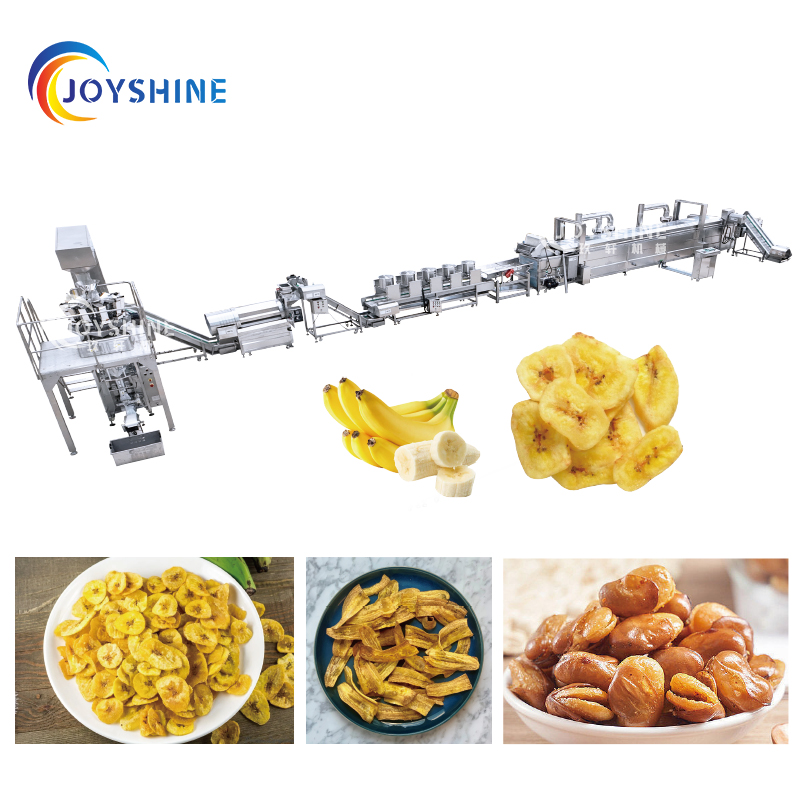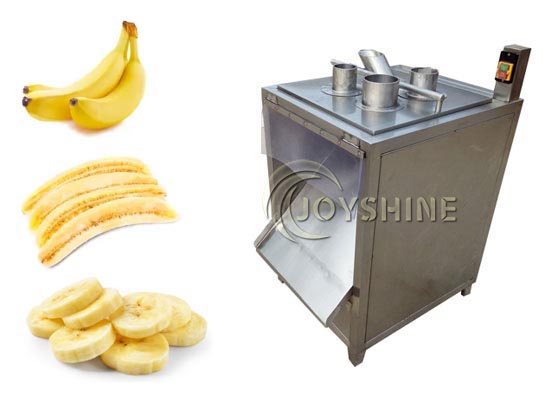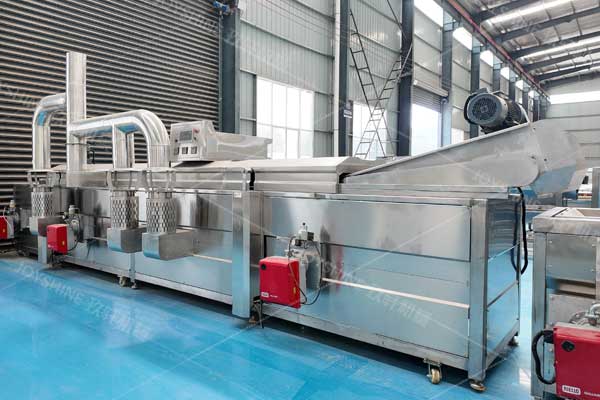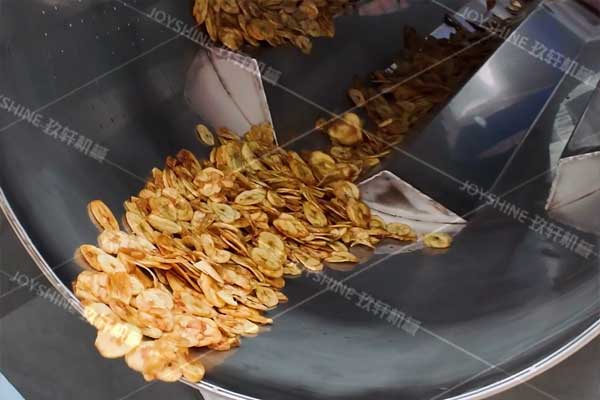Banana chips are one of the most popular fried snacks made from green bananas. They are crunchy, flavorful, and widely enjoyed across Asia, Africa, and Latin America. In commercial production, banana chips can be made in different styles — salted or sweetened — depending on local taste and market demand.
Joyshine provides a complete banana chips production line, available in various capacities ranging from 50 kg/h to 500 kg/h, customized to match each customer’s production goals. Below is a detailed introduction to the banana chips making process and the machines involved.
1. Banana Selection and Peeling
The process begins with selecting high-quality green bananas. Green bananas are ideal because they have firm texture and low sugar content, which helps produce crispy chips after frying.
Since green bananas are tough to peel and their sap is sticky, most factories use manual peeling workstations. Workers peel the bananas by hand to maintain the shape and reduce waste. Joyshine can design efficient manual peeling tables for smooth workflow and better productivity.
2. Slicing
After peeling, the bananas are cut into thin slices using a banana slicing machine. The slices can be round or long, depending on customer preference. The thickness (typically 1.5–2 mm) can be adjusted to ensure uniform frying and a consistent crispy texture.
3. Soaking or Sugar Dipping (Optional)
For sweet banana chips, the slices can be soaked in sugar or syrup solution before frying. This optional step adds a caramelized flavor and golden color. For salted banana chips, this step is skipped, and the slices move directly to frying.
4. Frying
Frying is the core step in banana chips production. Slices are fried in vegetable oil at a controlled temperature of 160°C–180°C (320°F–356°F).
Joyshine provides both batch-type fryers and continuous frying machines. The continuous fryer ensures stable temperature, uniform frying, and high output — ideal for commercial production.
5. De-oiling and Cooling
After frying, the chips are transferred to a deoiling machine to remove excess oil, which improves taste and extends shelf life. Then, the chips go through a cooling line, allowing them to cool evenly before seasoning.
Efficient deoiling and cooling help the banana chips stay light, crispy, and less greasy.
6. Seasoning (Optional)
In this stage, the banana chips are flavored with salt, sugar, or spices, depending on the target market. The drum seasoning machine ensures that every chip is evenly coated while rotating gently to prevent breakage.
7. Packaging
The final step is packaging. An automatic packaging machine packs the chips into pillow bags, jars, or bulk packages, depending on customer requirements. Proper packaging helps preserve crispness and flavor during transport and storage.
8. Customizable Capacity and Layout
Every factory has unique production needs.
Joyshine designs banana chips production lines with capacities from 50 kg/h to 500 kg/h, suitable for both small-scale startups and medium-sized industrial plants.
Each system can be customized according to:
Desired output and level of automation
Factory layout and available space
Type of banana (green or ripe)
Preferred frying and seasoning methods
This flexibility ensures that customers receive a production line perfectly matched to their requirements.
Joyshine Banana Chips Processing Solution
With over 10 years of experience in food processing machinery, Joyshine provides reliable, energy-efficient, and food-grade stainless steel equipment.
A standard Joyshine banana chips line includes:
Manual peeling workstation
Banana slicing machine
Continuous frying machine
Deoiling and cooling system
Drum seasoning machine
Automatic packaging system
From raw bananas to ready-to-pack crispy chips, Joyshine offers a one-stop solution to help factories improve efficiency and product quality.



